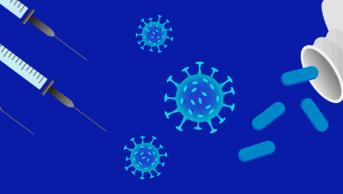
Shutterstock.com
In a bid to clamp down on inappropriate prescribing of antibiotics, the National Institute for Health and Care Excellence (NICE) has issued a new guideline on antimicrobial stewardship. At the launch event in London in August, one of NICE’s directors, Mark Baker, suggested that doctors might be referred to their regulator, the General Medical Council, for consistent failure to comply with local and national guidelines on antibiotic use.
The reactions from doctors unions were swift and sharp. The British Medical Association (BMA) and the Royal College of General Practitioners (RCGP) demanded an urgent meeting with NICE and expressed their concerns about the public admonishment of doctors. While the RCGP pointed the finger at pushy patients demanding antibiotic prescriptions. NICE backed down.
But rather than squabbling over the professional reputation of doctors, the greater priority is preventing what has been called a ‘catastrophic threat’ by chief medical officer Dame Sally Davies. It is estimated that there are 50,000 deaths caused by antimicrobial resistant infections in the United States and Europe. By 2050, these infections could kill an additional 10 million people worldwide.
NICE has estimated that if its 2007 guidance had been followed, the 46.1 million prescriptions for antibiotics last year would have been reduced by 10 million prescriptions. If the nicely-nicely approach of guidelines are insufficient to change prescribing behaviour then is the deterrent of referring a doctor to the regulator such an outrageous threat?
The General Medical Council itself says that a doctor should be referred to it if a doctor has shown “a deliberate or reckless disregard of clinical responsibilities towards patients”. It could be argued that prescribing an antibiotic for uncomplicated flu or a cold is a disregard of clinical responsibilities.
NICE recommends antimicrobial pharmacists work on stewardship teams to monitor prescribing data and provide advice to individual prescribers. These teams should be rigorous in their approach and have clear targets. A public health campaign would also help make patients understand the risks to the community and to the individual misusing antibiotics.
Greater investment is also desperately needed to develop a reliable, affordable point-of-care test to distinguish between bacterial and viral infections. This is one of the measures recommended in the new NICE guideline. But if all these measures fail to change prescribing behaviour then perhaps doctors unions should be willing to consider the threat of GMC referral as a necessity to preserve one of modern medicines most valuable recourses.
It is ultimately doctors after all who are charged with preserving the efficacy of antibiotics. But before the admittedly quite draconian step of referring doctors to the regulator is properly considered, new stewardship guidelines should be given some time to take effect.


